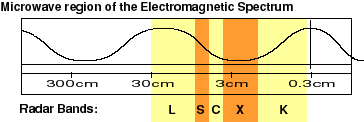
~MICROWAVES~
Microwaves are a really cool way of heating things (literally, unlike an oven, the air in a microwave doesn't actually heat up). They use radio waves at a frequency of approximately 2,500 megahertz. Water, fats, and sugars absorb radio waves at this frequency, but most plastic glass and ceramics do not. This means that microwaves are very efficient with their distribution of energy because energy is only going into what you want heated up! Useful note: the waves in your microwave are reflected by metal so unless it's your roommate's microwave, use a plate. Click on the electromagnetic spectrum to see what happens if you do "forget" to heed my advice. (The longer waves you see in the spectrum are those that are used in our household microwaves)
http://imagers.gsfc.nasa.gov/ems/micro.html
quicktime movie: http://home.earthlink.net/~marutgers/fun/microwave/microwave.html#lightbulb
Have you ever noticed that your food you heat up in the microwave doesn't come out crisp like it does in an oven? That's because unlike microwaves, ovens use conduction to heat its contents. The air in the oven is heated up and slowly penetrates through its food from the outside in. The hot, dry air of the oven evaporates the moisture of the outer layer of whatever you're cooking, making it crisp (ie: bread crust). Microwaves, however, don't heat up the air inside but instead excite certain atoms of what you are cooking so baking bread in the microwave probably won't turn out as nice as you'd like.
Fun tip! Do you hate the fact that your frozen corn dogs come out without the crispy crust that you love? Try wrapping them in cardboard which will heat up and act as hot air in an oven, allowing the crust to become crispier. Now everyone will think that you're a great cook without ever discovering that you don't even know how to work an oven!
Bonus tip: If you live with your parents and don't like seeing your mom angry, put a paper towel over the food you are heating.